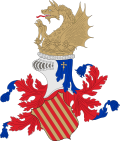This article needs additional citations for verification .(November 2023) |
Jalance | |
|---|---|
 | |
| Coordinates: 39°11′32″N1°4′36″W / 39.19222°N 1.07667°W | |
| Country | |
| Autonomous community | |
| Province | Valencia |
| Comarca | Valle de Cofrentes |
| Judicial district | Requena |
| Government | |
| • Alcalde | Ángel Abel Navarro Navarro (PP) |
| Area | |
• Total | 94.80 km2 (36.60 sq mi) |
| Elevation | 453 m (1,486 ft) |
| Population (2024-01-01) [1] | |
• Total | 803 |
| • Density | 8.47/km2 (21.9/sq mi) |
| Demonym | Jalancino/a |
| Time zone | UTC+1 (CET) |
| • Summer (DST) | UTC+2 (CEST) |
| Postal code | 46624 |
| Official language(s) | Spanish |
| Website | Official website |
Jalance is a municipality in the comarca of Valle de Cofrentes in the Valencian Community, Spain. As of 1 January 2022, the population is 788 people. [2]


